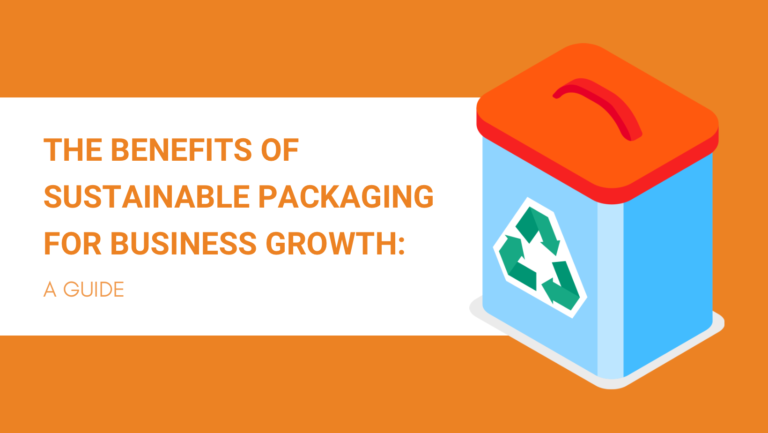The benefits of sustainable packaging are increasingly recognized by companies in today’s fast-paced and ever-changing business landscape as a way to improve their bottom line and stay ahead of the competition.
Sustainable packaging is gaining momentum among buyers worldwide due to the increasing awareness of environmental issues and the growing demand for environmentally conscious products.
And finally, businesses in all major industries are starting to realize the potential for sustainable packaging to drive business growth.
So, let’s dive right in and see all the benefits of sustainable packaging your brand will see if you make the switch in 2023!
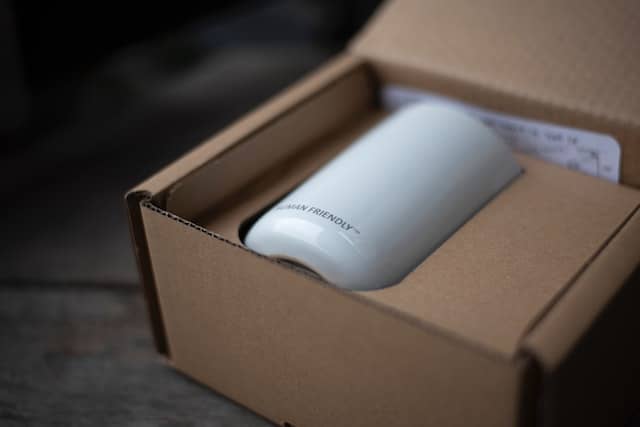
What Is Sustainable Packaging?
Let’s first clarify what does sustainable packaging mean? In simple terms, sustainable packaging is a way of designing, producing, and disposing of packaging materials to minimize environmental impact.
This can include using bio-degradable, recyclable, compostable, and eco-friendly materials or reducing the amount of packaging used. Furthermore, the production process of sustainable packaging aims to reduce energy, water usage, and carbon footprint.
All in all, sustainable packaging is an approach that considers the entire life cycle of the product’s packaging, from sourcing materials to disposal to reduce the negative impacts on the environment.
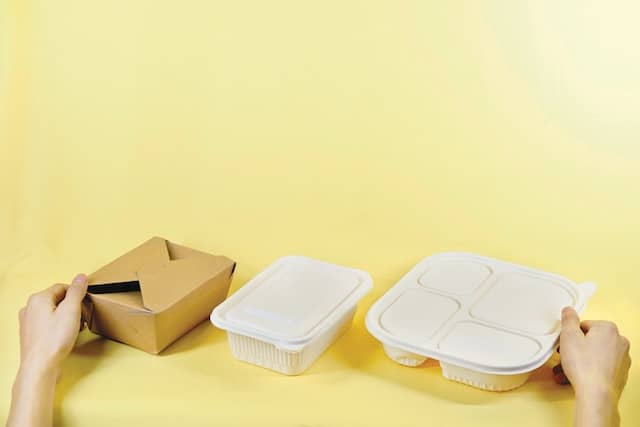
What Are the Different Types of Sustainable Packaging?
Sustainable packaging is a broader category, containing several different types of packaging materials, such as:
Biodegradable Packaging
These are the type of packaging materials that natural processes and microorganisms can break down in the environment. Some examples of biodegradable packaging are starch-based plastics, cellulose, glassine, and bioplastics.
Recyclable Packaging
Next, we have recyclable packaging, a group of materials that can be collected, processed, and remade into new products. These include materials like recycled glass, metal, certain types of plastic, and recycled paper and cardboard.
Compostable Packaging
These are biodegradable and organic materials suitable for composting, such as cellulose or plant-based packaging. Compostable packaging materials, as the name suggests, can be broken down, decomposed, and returned to the soil by microorganisms and other living organisms.
Reusable Packaging
Our next sustainable packaging options are materials that can be used multiple times before you dispose of them, such as refillable containers, or durable bags and containers.

Mushroom Packaging
Mushroom packaging is an alternative to styrofoam that is becoming increasingly popular. It’s made from mycelium, which is a fungus found in mushrooms. This type of packaging material is strong and durable, making it suitable for holding and keeping fragile products in place.
Corrugated Packaging
Corrugated boxes are made from fibers of trees and recycled corrugated containers. This material can be used multiple times before being disposed of, with 7-10 uses or life cycles. Many online merchants widely use corrugated packaging to package and ship products.
Cornstarch Packing Peanuts
Instead of bubble wrap, many businesses opt for something with less environmental impact, such as cornstarch packing peanuts. These are more eco-friendly and do the same job in terms of practicality.
These are just some of the main types of sustainable and environmentally friendly packaging solutions, and there are many more within each of them. So, do your research and choose carefully based on product type, strength, and use.
Lastly, we’d like to go back to one type of sustainable packaging, which is often underestimated – reduce the amount of packaging you’re using! Doing this makes your business more efficient and sustainable in the long run.
The Environmental Benefits of Sustainable Packaging
Let’s start the main part of this guide by discussing how does sustainable packaging help the environment? These are the main environmental benefits to remember:
Reduction of Waste in Landfills
Sustainable packaging materials are designed to be easily recyclable or compostable, which can help increase the rate of recycling and composting and, ultimately, reduce the amount of waste that ends up in landfills.

Conservation of Non-Renewable Resources
The next environmental benefit of sustainable packaging we’re going to look at is the conservation of non-renewable resources. These packaging materials are not made from fossil fuels, which helps save these essential resources.
Reduced Carbon Footprint and Greenhouse Gas Emissions
According to the Sustainable Packaging Coalition, the carbon footprint is at the top of a customer’s mind when purchasing. By using sustainable packaging, you will address this concern.
Did you know that something as simple as the weight of your packed product impacts the carbon footprint? Choosing a lighter weight material and using more efficient packaging is what we suggest for your part in protecting the environment.
Increased Supply Chain Efficiency
A more efficient supply chain is less harmful to the environment. Using sustainable packaging makes the supply chain more efficient because of many reasons:
- Using lighter weight materials;
- Using a smaller amount of packaging;
- Better usage of the storage space;
- Less transportation storage costs;
- Reduced waste;
No Toxins or Allergens
The next environmental benefit will apply to you as the seller or handler of the product, as well as your buyers. Sustainable packaging doesn’t contain common toxins or allergens present in conventional packaging.
This is great not only for the environment but also for your health and the health of your customers.
Protection of Biodiversity
Lastly, sustainable packaging materials are usually made from plant-based sources like bamboo, hemp, and sugarcane. These sources are renewable and have less impact on our planet’s biodiversity.

The Business Benefits of Using Sustainable Packaging
Now, let’s look at all the financial and business benefits of switching to sustainable packaging options:
A Wide Variety of Packaging Choices
Luckily for you, there are eco-friendly alternatives for all types of product packaging needs. For instance, bubble wrap can be replaced with cornstarch packing peanuts, styrofoam can be replaced with mushroom packaging, and even transparent plastic bags can be switched to glassine bags.
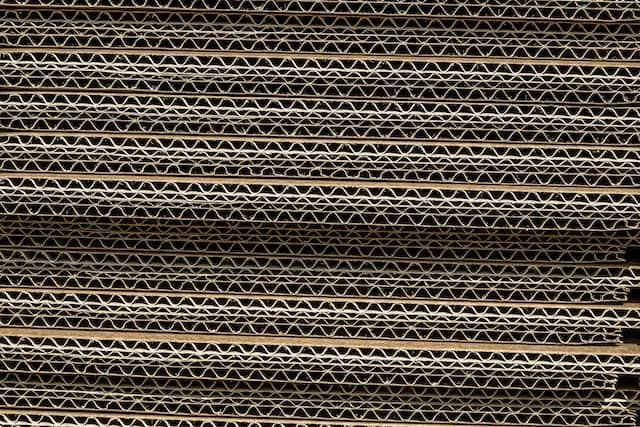
Fewer Storage Costs
The concept of sustainable packaging promotes the practice of efficient packaging or using less than what you normally would.
Considering this, it’s easy to understand why sustainably packaged goods often take less space. As a result, you will experience less storage and even transportation costs.
Improves Your Brand Image and Brand Loyalty
Adopting sustainable packaging will help your business stand out from competitors and improve your brand image. This is just the thing that will tip customers over the edge when it’s a tie between you and a competitor.
Helps Attract More Customers
Customers are becoming more eco-conscious on a global scale. So, if in the past, sustainable packaging was a “nice plus”, today, for many customers, it’s obligatory.
Once you switch to green packaging, you can promote this change as a part of your marketing strategy. This can help your company benefit from its commitment to corporate responsibility and attract more customers.
Increases Sales and Cashflow
As a result of your improved brand image and attracting more customers, you’ll enjoy a boost in sales! This will show you how much your target group really cares about sustainable packaging.
Saves Costs Long-Term
Sustainable packaging might have a slightly higher sourcing price, but it can save you money at the end of the day. Sustainable packaging materials are often made from renewable or recycled resources, which are less expensive than traditional packaging materials in the long run.
Plus, using sustainable packaging can reduce the costs associated with waste disposal and recycling.
Compliance with International Regulations
Today, many governments are implementing regulations aimed at reducing the environmental impact of packaging. Switching to sustainable packaging can help you comply with these regulations, and avoid penalties and legal fees.
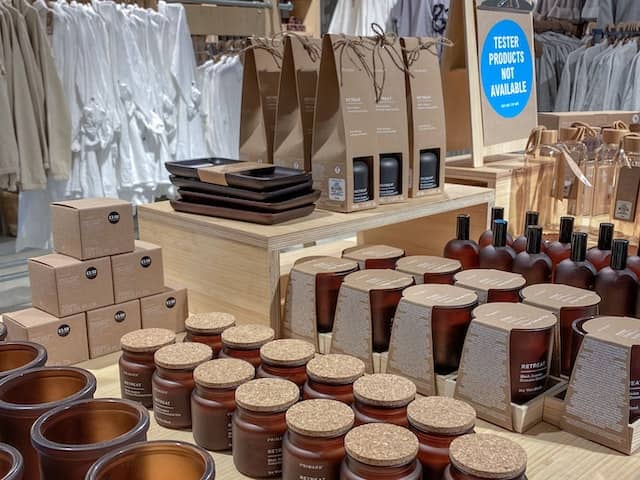
FAQs about the Benefits of Sustainable Packaging
To ensure we don’t skip anything important, let’s look at some of the most frequently asked questions on the benefits of sustainable packaging.
What Makes Packaging Sustainable?
We already mentioned above that sustainable packaging has a particular way of design, production, and disposal in a way that minimizes its environmental impact. With this in mind, there are several factors that make packaging “sustainable”:
- Materials: for packaging to be classified as sustainable, it has to be made from renewable, biodegradable, or recyclable materials (resources);
- Design: in terms of design, it has to be structured in a way that minimizes waste, by using less packaging or by using materials that are biodegradable or recyclable;
- Production: the third requirement is that the packaging is produced in an environmentally friendly way, with reduced energy consumption and water usage, resulting in a lower carbon footprint;
- Packaging life cycle: sustainable packaging practices consider the entire life cycle of a product’s packaging, from the sourcing of raw materials to the disposal of the package;
- End-of-life disposal: the packaging has to be recyclable or compostable to help decrease the amount of waste that goes to landfills;
- Innovation: another trait of sustainable packaging developers is their innovation and always looking for new ways to improve and reduce the impact on the environment even further;
- Compliance: lastly, sustainable packaging should follow laws and regulations that aim to protect the environment;
What Are the Advantages of Eco-Friendly Products?
All of the benefits and advantages of sustainable packaging we discussed above apply to eco-friendly products as well. For instance:
- Reducing the carbon footprint;
- Saving water;
- Saving non-renewable resources;
- Reducing waste in landfills;
- Improving your brand image;
- And more.
What Are the Disadvantages of Sustainable Packaging?
As we saw above, the benefits of sustainable packaging to the environment as well as your business are multiple. But, it’s important to note that it also has some disadvantages:
- Initial cost: the initial cost of sustainable and eco-friendly packaging might be higher than the traditional ones. Supply and demand still make up the market price, and sustainable packaging simply isn’t produced yet in such mass numbers for its price to drop;
- Complexity when switching: the next “disadvantage” is the transitional period from traditional to sustainable packaging. This can result in more waste and loss of resources at first. We recommend having a plan in place;
- Sourcing difficulties: sustainable packaging materials may not be as widely available as traditional packaging, making it harder for businesses to source them. Here at Niche, we regularly buy sustainable packaging for our customers, so let us know what you need!
- Incorrect disposal: unfortunately, most localities today don’t have the right composable infrastructure to correctly dispose of this type of packaging. As a result, there’s often cross-contamination which results in ever more waste;
How Important Is Sustainable Packaging for Consumers?
Consumers are becoming increasingly aware that conventional packaging depletes the Earth’s limited resources. That’s why we increasingly prefer packaging made from recycled or biodegradable materials.
Today’s customers are more likely to purchase products with minimal packaging, or that can be easily recycled. Additionally, some consumers are also willing to pay a premium for products with sustainable packaging.
Overall, sustainable packaging can help build consumer trust and loyalty and increase brand reputation.
To Summarize
Hopefully, you can now understand why eco-friendly packaging is important for your business. Even if you can’t make this the norm, offering an eco friendly packaging option to your customers can greatly boost your sales and long-term success and profitability.
If these benefits of sustainable packaging resonated with you, it’s time to make the switch! We can help you source all types of wholesale eco-friendly packaging made of any sustainable materials you desire.
